The XLNT tamales go back 125 years, capturing nostalgia for Californians across the U.S.

- Share via
Every week, Vincent Passanisi gets hundreds of emails from across the country about his XLNT beef tamales.
I lived in Los Angeles for 47 years but I have now moved to Wisconsin to be near family. I was hoping I could order tamales for tamale pie. We do not have your tamales and they are the best.
For the record:
9:38 a.m. Dec. 23, 2019In an earlier version of this post, web producer Dennis Wilen’s last name was misspelled as Willen.
Small, machine-made and packaged in white plastic bags, the company’s version barely resemble what people envision when they talk about the Mexican and Central American favorite.
we used to live in california and bought your tamales but we now live here in Tennessee and can’t find them anywhere.
The inside of each one features a slurry of ground beef, spices and shredded carrots. The masa that encases this stuffing is thin and salty. Each tamale is wrapped not in a corn husk or banana leaf, but poly paper.
I am from Cali, now live in Minnesota. How can I order your tomales?
Once a Southern California culinary touchstone on the level of Van de Kamp’s bakeries and Chasen’s chili, XLNT offers a time warp to an era when Latino food wasn’t as ubiquitous as it is today.
But during a season when tamales become their own food group, taking over everything from office potlucks to family gatherings, XLNT’s tamales are largely ignored around these parts, if they even register with eaters.
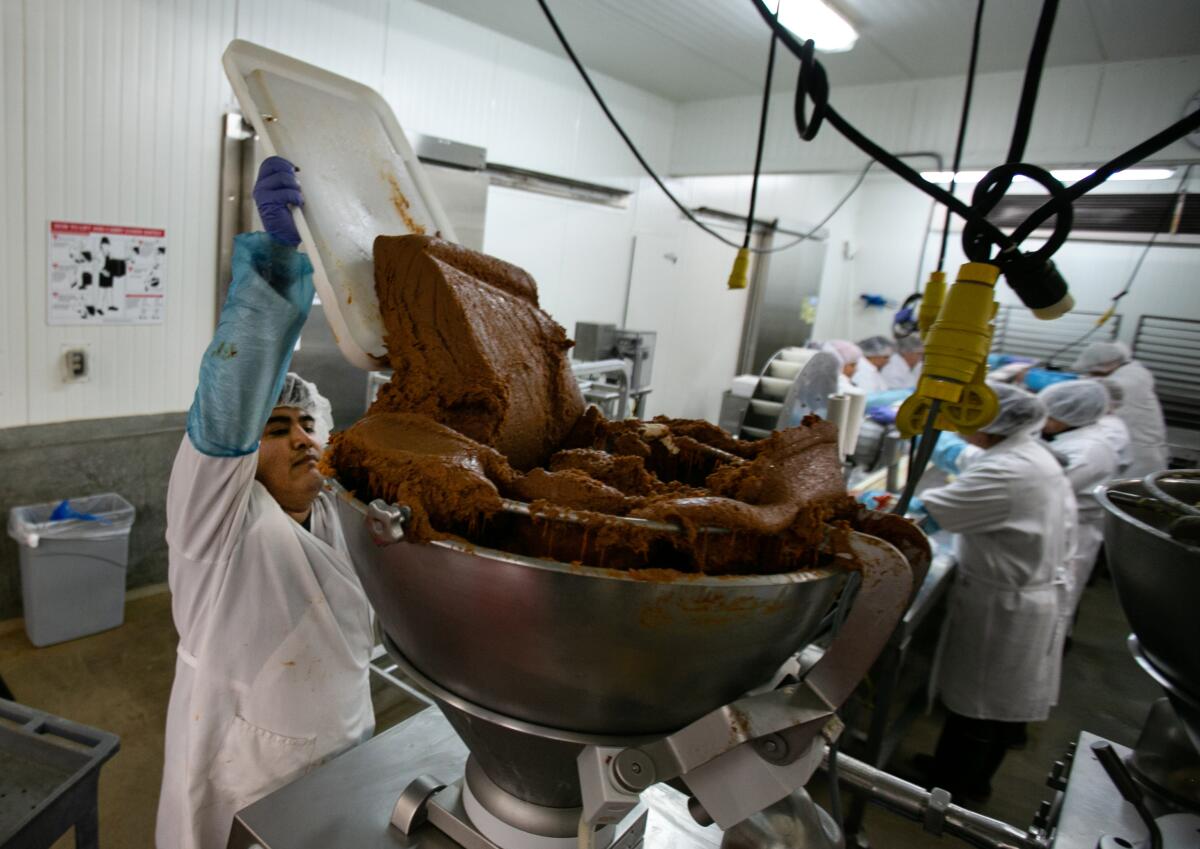
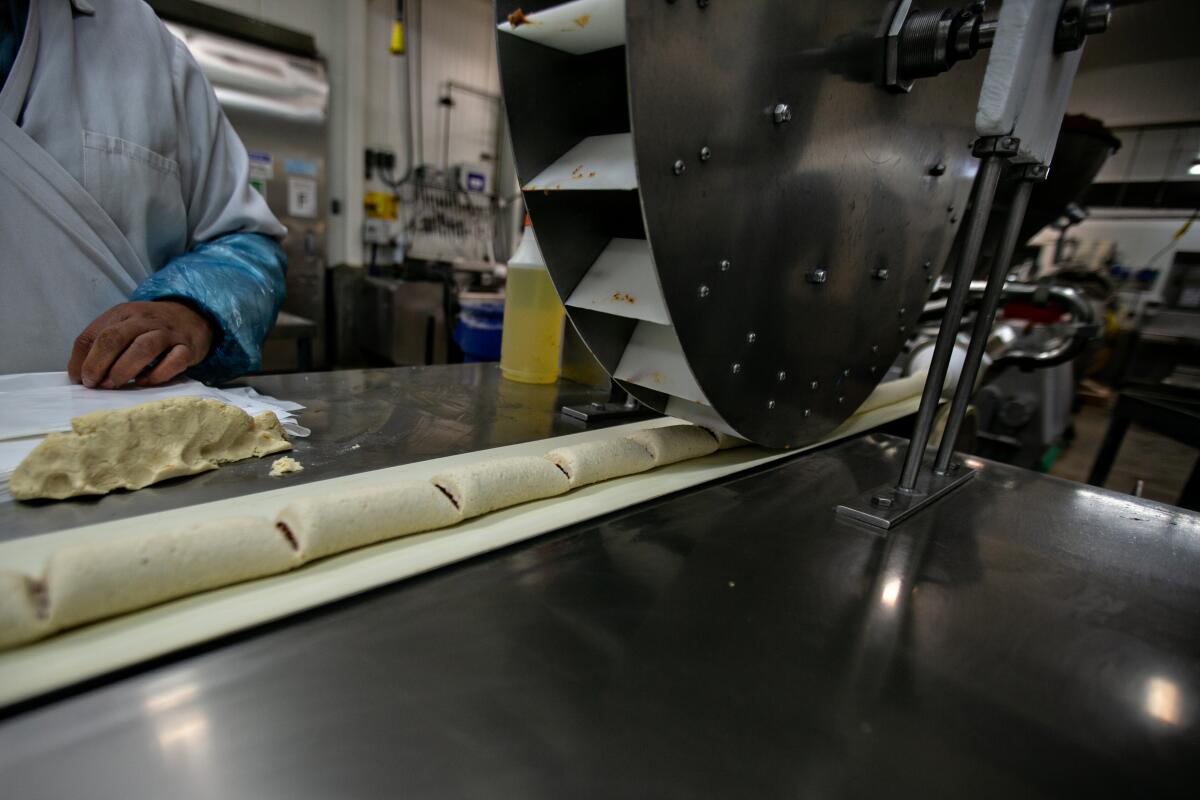
They’re found only in the frozen food sections of unhip supermarkets such as Stater Bros. and Ralphs, stocked not in the ethnic food section but alongside legacy brands such as Farmer John and Hillshire Farm.
“Never heard of them,” said Omar Lopez, an immigrant from the Mexican state of Puebla who sells tamales stuffed with chicken, pork or rajas con queso (jalapeño strips and cheese) at his Spiga’s Bakery in Orange. He tried to be diplomatic when presented with some recently.
“Oh, they seem nice,” he said in Spanish while prepping a Christmas order.
Still, at 125 years old, XLNT is the oldest continuously operating Mexican food brand in the United States, and one of the oldest companies in Southern California, period.
And though decades removed from its heyday, these unassuming tamales are seeing an upswing in sales driven by California expats who pine for a taste of home.
“It’s the nostalgia of it,” says Passanisi, president of Santa Fe Importers, the Italian American Long Beach deli and packer that now owns XLNT (pronounced “excellent”). “It brings them back to the time of their lives, when things were much simpler.”
One of those people is Joe de la Riva. The 58-year-old remembers “begging my mom to buy them” when he was growing up in Orange County.
“They weren’t like my mom’s or grandma’s,” said the Las Vegas resident, who boasts that his freezer always has a bag. “But they’re good. They’re easy. They’re handy. And they’re not expensive at all.”
***
Born & raised in So.Cal. been in Chicago area long time. Sure do miss XLNT tamales! Nobody here understands
The story of XLNT is, in many ways, the story of Southern California.
The company started in 1894, a time when people still referred to Mexican food as “Spanish” and tacos had yet to appear on L.A. menus.
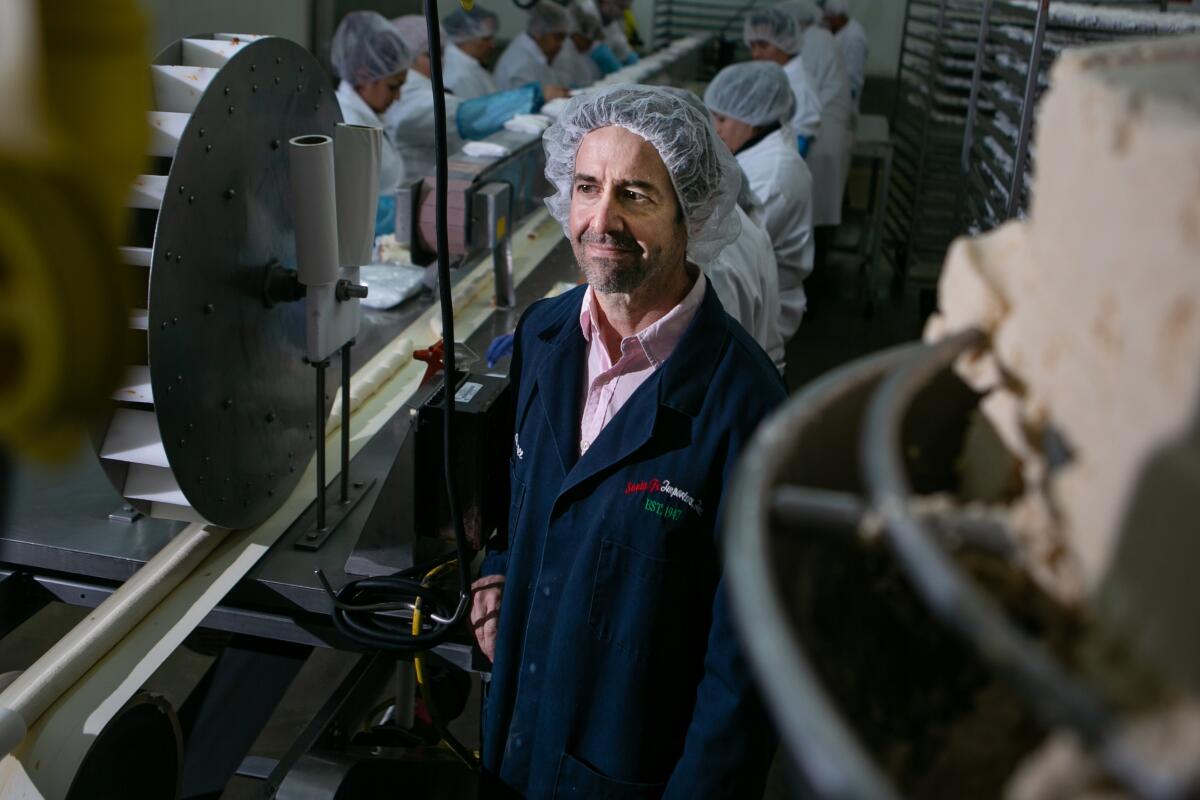
Tamales were the city’s most popular ethnic food. The rich served them on fine china for fancy dinners; the working classes lined up at horse-drawn wagons that, much like the food trucks of today, either roamed the embryonic metropolis or parked in one spot all day and through the night.
XLNT opened a factory in Boyle Heights to meet demand; a worker, Charles Crawford, eventually assumed ownership. By 1908, the son of Canadian and Dutch immigrants was placing ads in newspapers that proclaimed his chicken and beef tamales the “Best on Earth.”
Crawford and his brothers grew XLNT into a multimillion-dollar empire that sponsored a radio show on KNX-AM (1070) and produced more than 60 items, not all of them Mexican: enchilada dinners, taco kits, mayonnaise, pizza. The brand’s distinctive block-letter, red-and-blue logo made cameos in Disney cartoons and “Little Rascals” shorts.
But the star remained the tamales, which came in 3-, 5- and 8-ounce sizes. They were available everywhere — grocery stores, liquor marts, delis, even at school cafeterias — and became part of the Southern California diet.
Los Angeles web producer Dennis Wilen first ate XLNT tamales fresh from a slow cooker at the Sunset Grill in Hollywood when the Philadelphia native had just arrived in the city in 1977 and still enjoys their slightly spicy, not-too-greasy flavor.
“When I moved here, I discovered a whole new world,” he said, “and that flavor takes me back to that time of wonder and exploration. I’ve graduated to other tamales, but I always go back to them.”
“It’s like a meat pillow,” said Sarah Whittenberg, a culinary instructor for the North Orange County Community College District who grew up with XLNT during the 1980s in Irvine and grabs a bag at least once a month. “They’re not Mexican-style tamales, or Honduran style. They’re Southern California style.”
By the time Whittenberg first enjoyed them, XLNT belonged to Alex Foods, another pioneering Southern California tamale company with its own claim to Mexican food history: The Morales family that owned it invented Doritos at Disneyland in the 1960s.
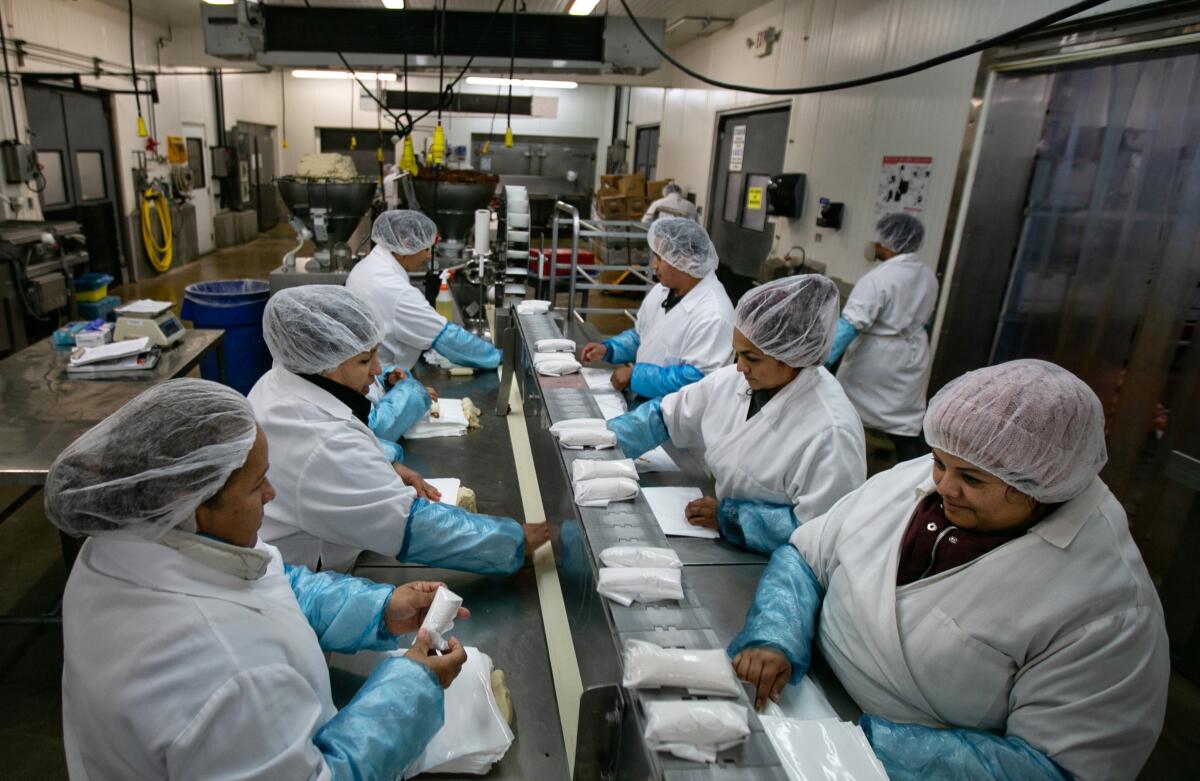
At its height, Alex Foods made more than 20 million tamales a year. But they fell out of favor as consumer tastes changed. The company renamed itself Don Miguel Mexican Foods and introduced other, more “authentic” tamales. When a private equity firm bought Don Miguel in 2006, it chose not to absorb the XLNT brand and left it to Michael Morales, grandson of Alex Foods founder Alejandro Morales.
“A spoonful of sour cream or cottage cheese on top and we were good to go,” said Thomas Ortega, who owns high-end Mexican restaurants in Cerritos and Long Beach. “It was a familiar part of our Chicano upbringing.”
But Ortega admits he hasn’t tasted an XLNT tamale in more than 20 years.
“Everyone’s palates have evolved so much,” he said, “I’m not sure there is much to appreciate anymore other than the nostalgia of my youth.”
***
My dad is turning 80 in just a few weeks and I would like to surprise him with some XLNT tamales. Unfortunately, he now lives in Lincoln, Nebraska. Am I able to special order them directly from you and have them sent to him?
In 2010, Passanisi bought XLNT Tamales from Morales, who wanted to retire.
“I hated to see it go away,” said Passanisi, who was already producing XLNT tamales for Morales, who was unavailable for comment. “So many people remember those tamales. They grew up on it. Their parents grew up on it. And they grow distraught that they can’t get it where they’re at. You feel a tremendous amount of responsibility.”
Santa Fe Importers now makes 1.5 million tamales a year — far below XLNT’s pinnacle. Passanisi wouldn’t disclose financials except to say the brand is “profitable” and at a point where it’s ready to expand to meet “huge demand.”
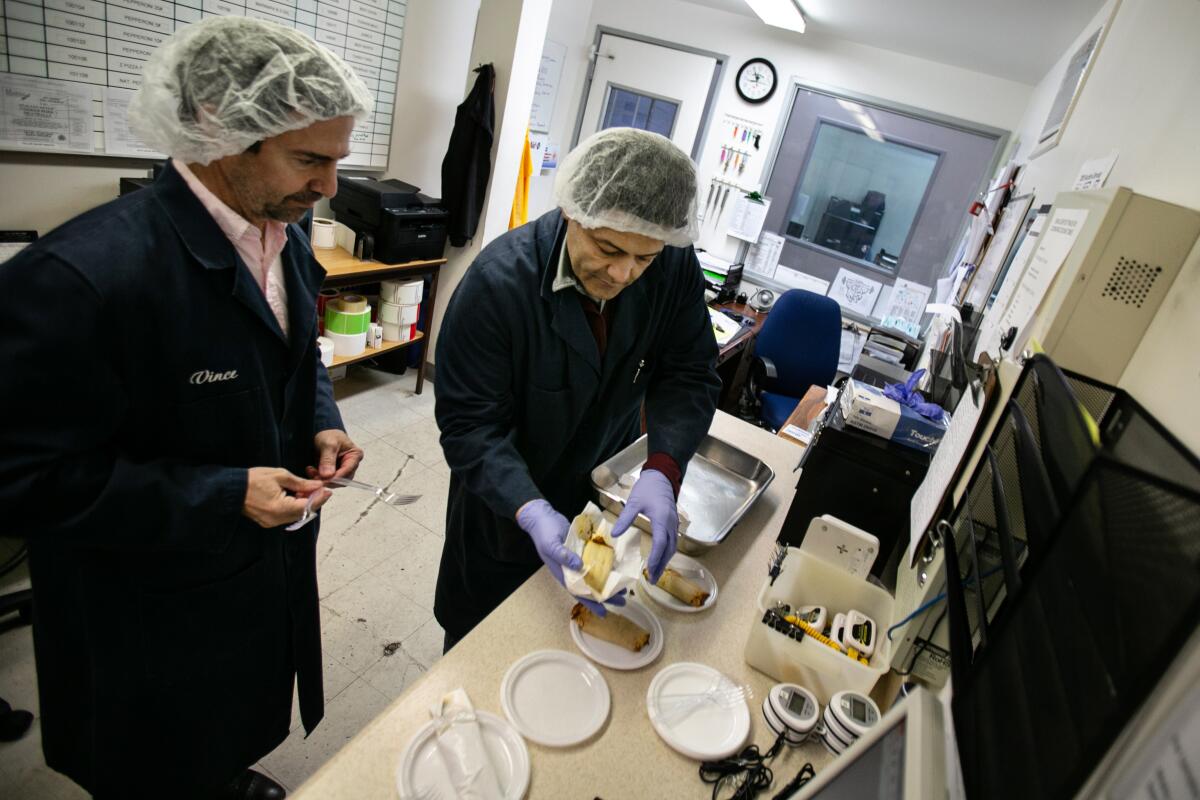
Five days a week, workers feed machines with masa and beef filling that spit out a length of tamale that could conceivably go on forever if not for a water wheel-like contraption that cuts it into individual tamales. Workers then wrap them, put them on trays and proceed to first steam, then flash-freeze them by the hundreds.
“They’re different than my mom’s, but still good,” said operations production manager Jess Berumen. “More moist.”
With XLNT’s distribution currently limited to Southern California and parts of Northern California, Arizona and Washington, Passanisi is ramping up for the future. He’s beginning to test chorizo, shredded beef and pork tamales. He also plans to spend money on marketing in the East Coast.
“It’s amazing how XLNT has survived,” Passanisi declared. “Sometimes, I see that year, 1894. That’s 30 years after the Civil War!”
Meanwhile: Can you send some tamales to Texas or do they sell them in Elpaso
More to Read
Sign up for Essential California
The most important California stories and recommendations in your inbox every morning.
You may occasionally receive promotional content from the Los Angeles Times.









